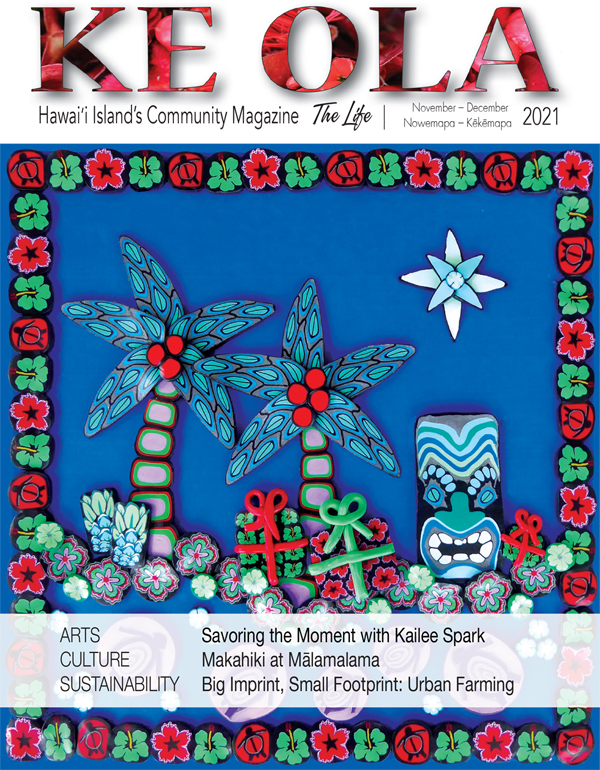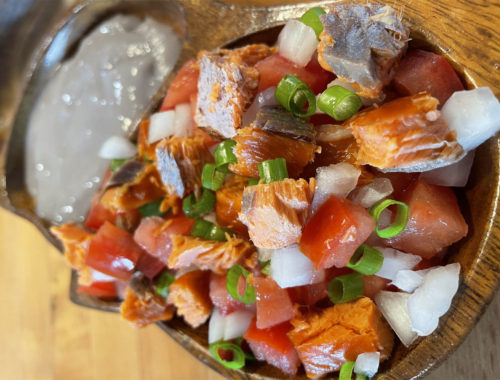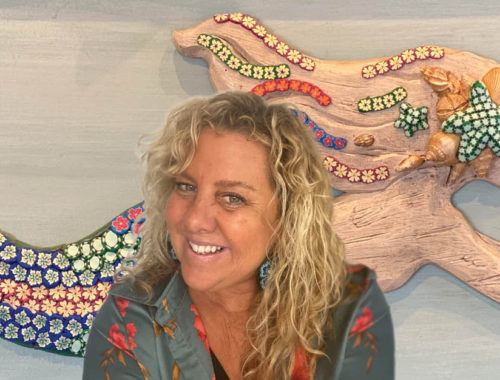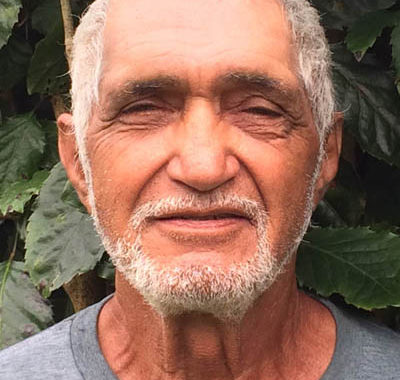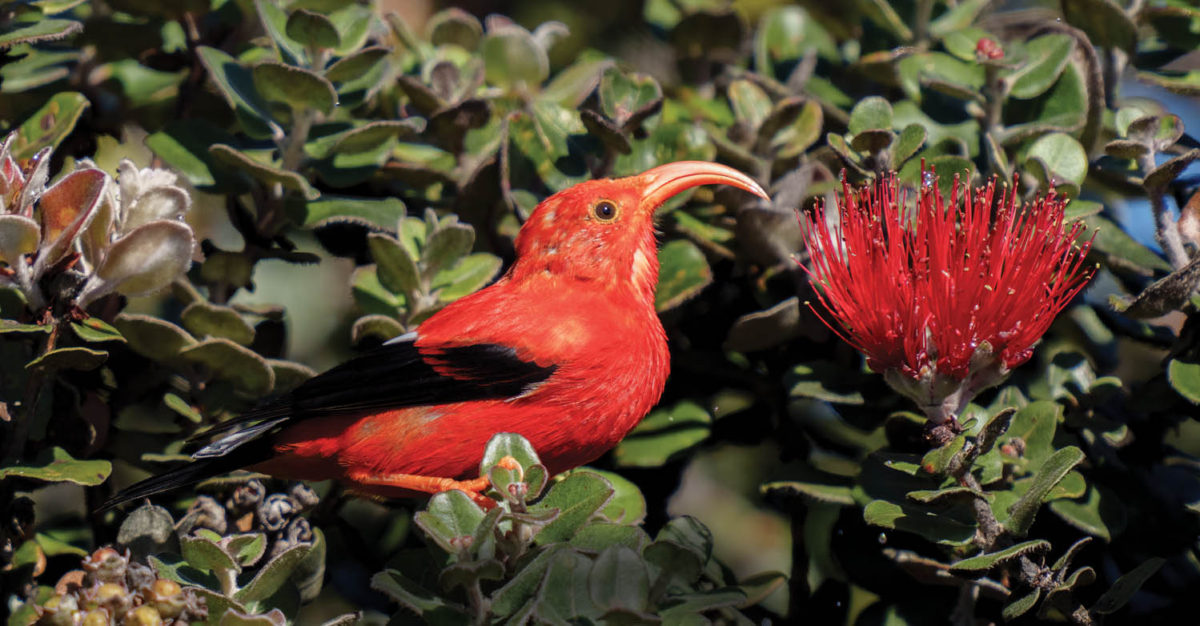
A Kipuka for All: Kaulana Manu Trail
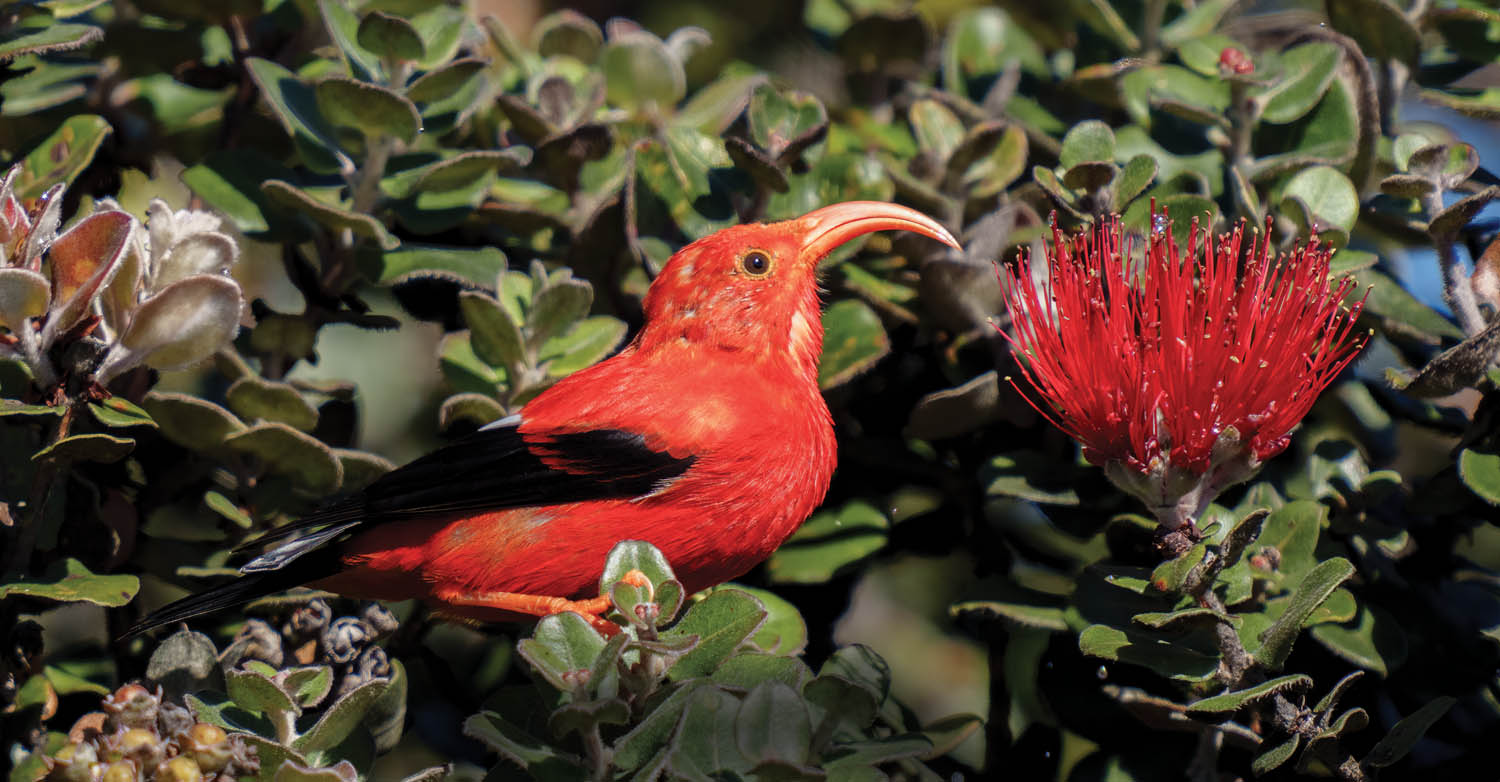
By Rachel Laderman
Near an ancient trail in the saddle between Hawai‘i Islandʻs two largest volcanoes, at 5,600-feet elevation and often wrapped in a misty cloud, is an oasis. It is a rejuvenating place for human travelers, and for birds, too. Since 2020, at milepost 21 on Daniel K. Inouye Highway (AKA Saddle Road), you can walk along an interpretive nature trail and learn about a great variety of native plants and birds, some very rare.
The name, Kaulana Manu Nature Trail, fittingly means “tranquil resting place for birds.” The easy hiking path of less than one mile winds through a 15-acre, 400-year-old kīpuka, an island of native forest spared from surrounding lava flows. Numerous kīpuka dot the lava throughout the Humu‘ula Saddle between Mauna Kea and Mauna Loa, most too remote for hikers to visit. These isolated forests foster unique species due to their separation from other populations. Some kīpuka have insects endemic only to them!
“This is a very intact native ecosystem,” explains Jackson Bauer, manager of the Nā Ala Hele Trails program, part of Department of Land and Natural Resources. “It is remote enough that invasive species have not gotten a foothold.”

Walk the Loop
From the parking area, take in an overview of the forest canopy. While reviewing the illustrated panels on cultural and natural history, you hear an enticing birdsong medley. Follow the painted footsteps leading along a short stretch of the old Saddle Road. The realignment of this highway in 2005 triggered mitigation money that paid for the nature trail and fencing. A Capital Improvement Project funded the parking area and solar-powered composting toilets.
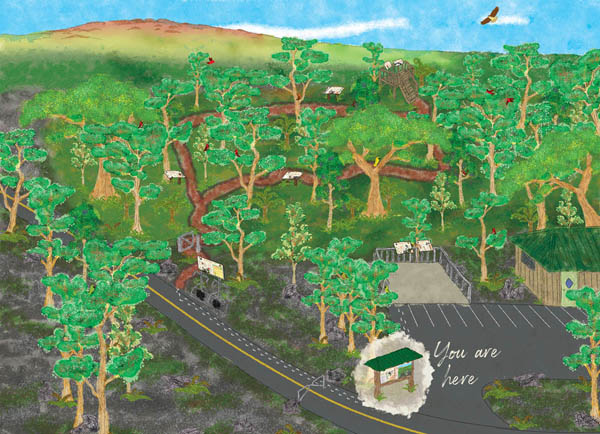
Heading to the right, use the shoe brushes to avoid spreading the Rapid ‘Ōhi‘a Death fungal disease, and you’ll soon start dropping down into the forest. Pass through the pig-fence gate and head left “to follow the flow of the signage,” advises Jackson, who developed the nine interpretive panels and 25 plant signs staged throughout the trail.
Now you are in the many-layered forest, visiting the wau akua, or realm of the gods, protected by ancient Hawaiians for its many special gifts. Hawaiians carved tall koa trees for canoes, harvested others for building and fiber, and collected abundant bird feathers and berries such as ‘ōhelo and ‘ākala—the Hawaiian raspberry. There are more than 70 species of native trees, shrubs, and ferns here.
Birds flash through the treetops seeking bugs and sipping nectar. It’s hard to catch more than a one-second glimpse, but Jackson makes it easy to identify them by their calls. “That’s the ‘i‘iwi—hear how it sounds like a squeaky door hinge? It’s saying ‘smoked meeeat,ʻ” he quips. “Hear that sound like R2-D2? That’s the crimson ‘apapane.”
‘I‘iwi Losing Safe Territory
Though 11 different native birds enjoy this rainforest kīpuka, several are close to extinction. One of the biggest causes is avian malaria, a parasitic disease carried by mosquitoes. The parasite does not survive well in the cooler climate above 4,000 feet elevation; however, “the ‘i‘iwi may live above 4,000 feet, and then fly down into lower areas and get sick,” says Jay Robinson, a retired ranger with Hawai‘i Volcanoes National Park. “Plus, as the climate warms due to human-caused climate change, mosquitoes carrying avian malaria are moving further upslope. By the time high school kids today are in their 40s and 50s, the ‘i‘iwi will be extinct,” warns Jay.
One avenue of hope comes from an approach already being used in some states and countries—mosquito birth control. This technique introduces Wolbachia bacteria, which live naturally in many insects, into male mosquitoes. If a male with Wolbachia mates with a wild female mosquito with a different (or no) strain of the bacteria, her eggs won’t hatch. Note, this is not genetic modification: male mosquitoes don’t bite, and Wolbachia cannot make people or other animals sick. Every day, insects with Wolbachia are living and dying around us.
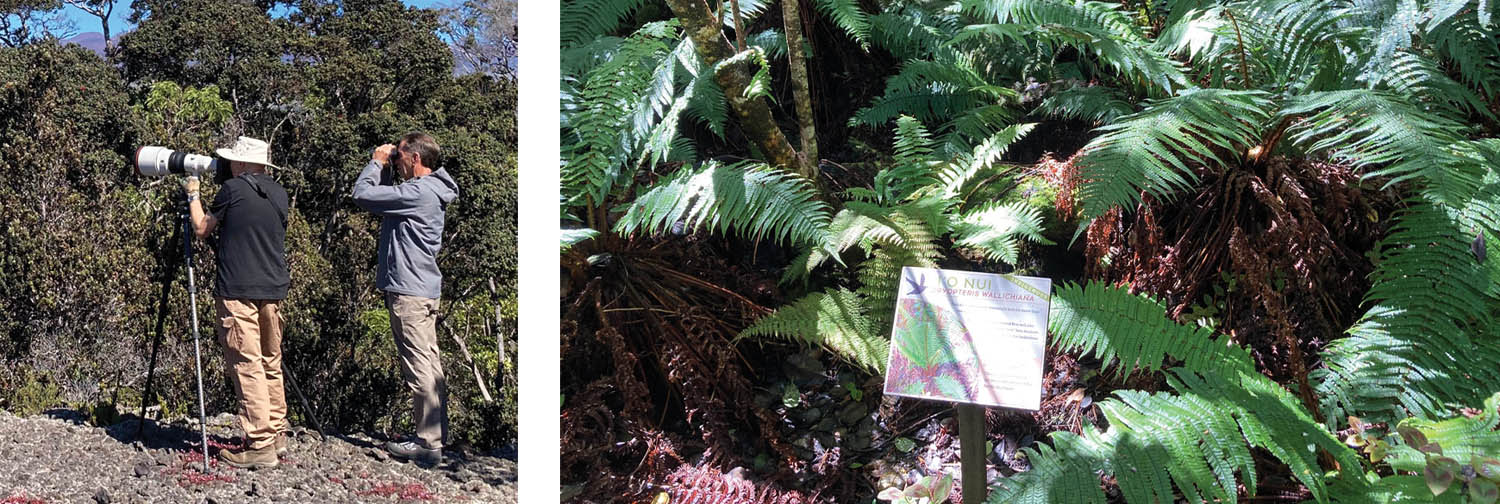
Refresh and Rededicate
The damage invasive plants and animals cause in Hawai‘i can be daunting. Taking your children to experience the sounds, smells, and sights of a pristine ancient forest—or just pausing to visit this tranquil resting place as you zip across the island—is a great way to feel the inspiration necessary to keep working towards island restoration. ❖
For more information:
Hawaiitrails.hawaii.gov, birdsnotmosquitoes.org
Rachel Laderman, Sustainable Pacific Program
Lynker LLC/NOAA Affiliate, Hawaii Island
